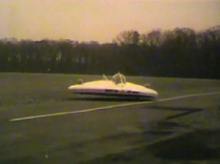In a previous blog we discussed the three-year $53 Million Campaign, launched at the beginning of Robert’s Goheen’s presidency in 1959. On an even larger scale was the five-year fundraising campaign that was launched on February 19, 1982 during the presidency of Goheen’s successor William G. Bowen. The goal for “A Campaign for Princeton” was set at $275 million (raised to $330 million in January 1984). Three years into the campaign, the fund drive ran like a “well-oiled machine,” according to the Daily Princetonian, bringing in more than $1 million a week. Fifty-five professionals worked with a body of 2.500 alumni volunteers, spread over seventeen regions, who were trained to ask fellow alumni to give at their maximum capacity. Featured here is “You Ask For It: An Introduction to Campaign Solicitation,” an instructional film that, however much a product of the 1980s, may still be of interest for today’s fundraisers.
The campaign goals were summarized in a Campaign Primer, published at the launch of the campaign. A full list and description of the goals, which included academic programs, facilities, student aid, and residential colleges, can be found at CampaignPrimer.pdf.
Alumni solicitors prepared to “make an ask” to prospective donors with the help of a written solicitation plan, provided by Princeton’s campaign staff. The solicitation plan, according to the Volunteer Handbook, contained particular information about the “prospect” as well as specific guidelines on how to work with the person to “help ensure maximum giving.” For the first time in Princeton’s fundraising history, alumni with capital gift potential were asked to make one single commitment to the campaign that included both Annual Giving (AG) and a capital gift (this was known as a “joint ask”). As the campaign was spread over five years, it allowed for all alumni to be addressed with their class’ major reunion goals in mind.
Solicitors were not meant to be bashful about their “ask.” Outright gifts of cash or assets (generally securities) were first priority, according to the Volunteer Handbook, but if that was a problem, other charitable tax planning techniques were encouraged. “If you are persuaded that a donor simply cannot meet the requested level through an outright gift, you should then introduce Planned Giving to the negotiation.” Since these techniques were rather sophisticated, further negotiations were referred to Princeton’s Planned Giving staff.
The above VHS video features two alumni ‘novices’ to the soliciting process, who ask an experienced alumnus named Jim, a regional chairman in charge of Major Gifts, in a staged interview for advice. The woman in the film is in charge of “Special Gifts” for her Class’ 10th Reunion, and the male novice alumnus is asked to solicit money for a large capital gift from a man who never donated more than $2.500 for Annual Giving. The film lets Jim go back in history, showing one failed soliciting attempt at the beginning of his career, because he was not well enough prepared (1:05). This is followed by his account of one recent successful attempt, in which an alumnus ended up giving much more than he initially thought he could manage, partially through Planned Giving (5:03).
Although the University Archives contain a lot of information about the campaign itself, information about the VHS film featured here is lacking. In the lists of Regional Chairmen Major Gifts, provided in the Volunteer Handbook, there is no James or Jim, hence the people in the staged interview may not be actual alumni. If you can provide more information about the making of the film, please let us know!
For more information on the campaign itself, see The Story of A Campaign for Princeton, 1981-1986 by William McCleery.
This VHS video is part of the University Archives’ Historical Audiovisual Collection (Item no. 1422)

